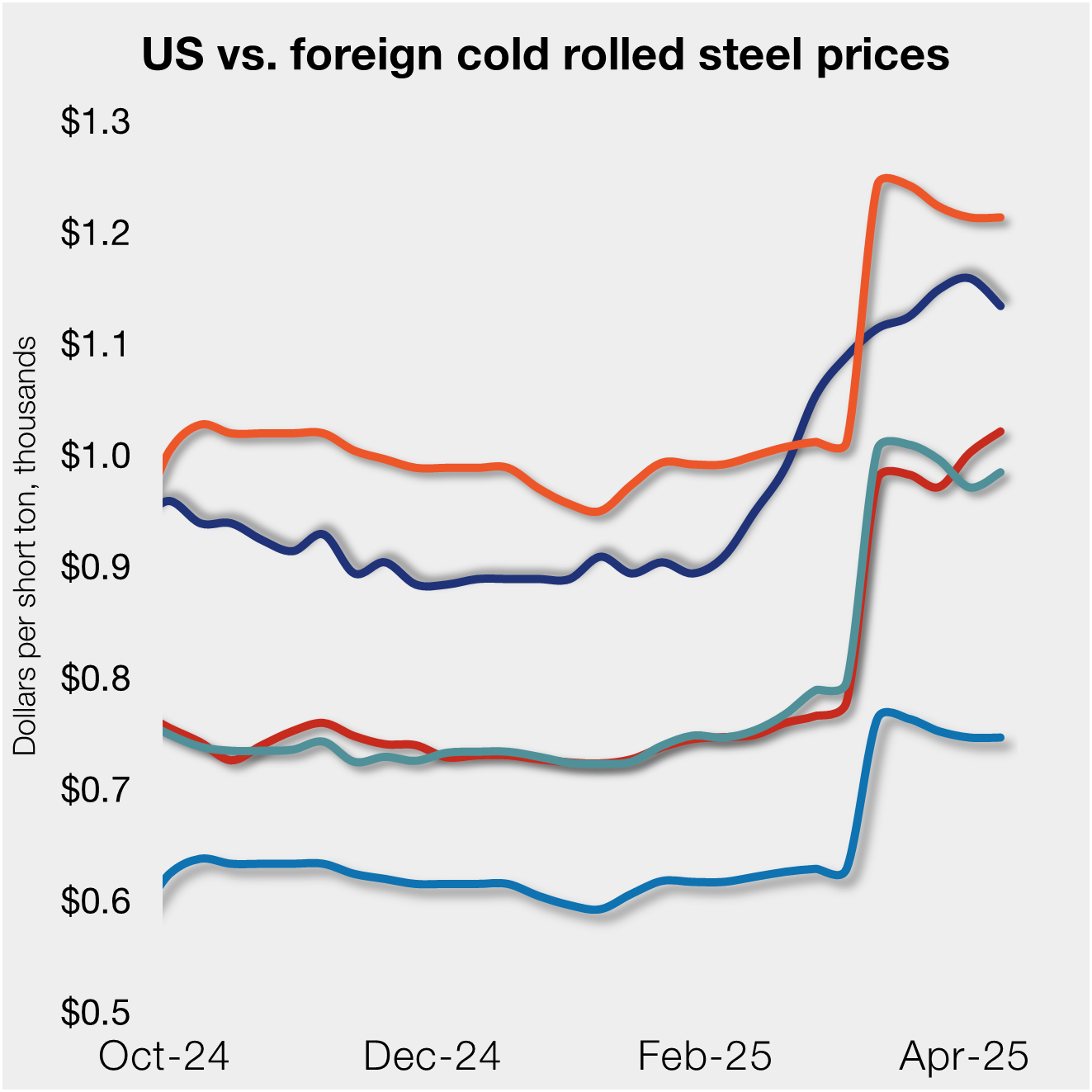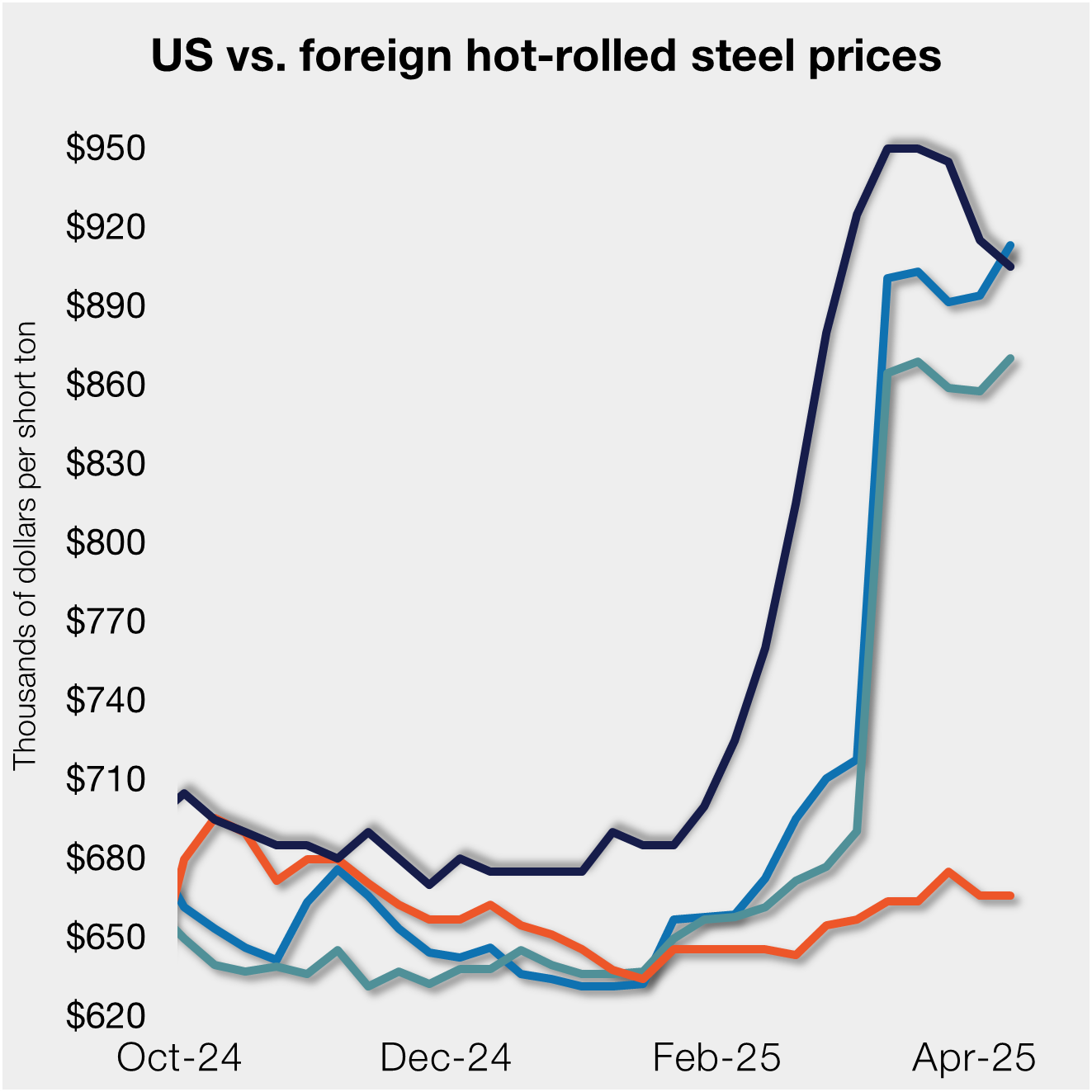Steel Products
AGC: Construction Employment Data for March
Written by Sandy Williams
May 2, 2018
Construction employment increased in 245 out of 358 metro areas between March 2017 and March 2018, declined in 67, and stagnated in 46, according to a new analysis of federal employment data by the Associated General Contractors of America. Association officials said that the new figures come amid questions about how a possible trade war and long-term infrastructure funding shortfalls will impact the construction sector.
“While firms in many parts of the country continue to expand, there is a growing number of threats that could undermine future employment growth in the sector,” said Stephen E. Sandherr, the association’s chief executive officer. “Among the top threats to future construction growth are the risk of a trade war and long-term infrastructure funding challenges.”
Houston-The Woodlands-Sugar Land, Texas added the most construction jobs during the past year (10,700 jobs, 5 percent), followed by Phoenix-Mesa-Scottsdale, Ariz. (9,500 jobs, 9 percent); Dallas-Plano-Irving, Texas (7,800 jobs, 6 percent) and Riverside-San Bernardino-Ontario, Calif. (7,200 jobs, 8 percent). The largest percentage gains occurred in the Weirton-Steubenville, W.Va.-Ohio metro area (29 percent, 400 jobs), followed by Merced, Calif. (26 percent, 600 jobs); Wenatchee, Wash. (26 percent, 600 jobs) and Midland, Texas (23 percent, 6,000 jobs).
{loadposition reserved_message}
The largest job losses from March 2017 to March 2018 were in Baton Rouge, La. (-3,200 jobs, -6 percent), followed by Columbia, S.C. (-2,200 jobs, -11 percent); Minneapolis-St. Paul-Bloomington, Minn.-Wisc. (-1,700 jobs, -2 percent); Newark, N.J.-Pa. (-1,700 jobs, -4 percent); and Montgomery County-Bucks County-Chester County, Pa. (-1,600 jobs, -3 percent). The largest percentage decreases for the year were in Auburn-Opelika, Ala. (-34 percent, -1,300 jobs), followed by Monroe, Mich. (-17 percent, -400 jobs); Portland-South Portland, Maine (-11 percent, -1,000 jobs) and Columbia, S.C. (-11 percent, -2,200 jobs).
Association officials said that trade disputes that could arise from the President’s newly-imposed tariffs and long-term infrastructure funding shortfalls could threaten future construction employment growth. They noted that many construction firms have already experienced significant increases in what they pay for steel products. Meanwhile, long-term funding shortfalls for infrastructure improvements could undermine demand for many firms’ services.
“The biggest threats to future construction growth are man-made: trade wars and funding shortfalls,” said Stephen E. Sandherr, the association’s chief executive officer. “Fortunately, Washington officials can help ensure future economic growth by avoiding a trade war and enacting long-term infrastructure funding.”

Sandy Williams
Read more from Sandy WilliamsLatest in Steel Products

SMU flat-rolled market survey results now available
SMU’s latest steel buyers market survey results are now available on our website to all premium members. After logging in at steelmarketupdate.com, visit the pricing and analysis tab and look under the “survey results” section for “latest survey results.” Past survey results are also available under that selection. If you need help accessing the survey results, or if […]

CRU tariff webinar replay now available
CRU’s latest webinar replay on how Trump’s tariffs affect the global steel market is now available on our website to all members. After logging in at steelmarketupdate.com, visit the community tab and look under the “previous webinars” section of the dropdown menu. You’ll find not only this special CRU webinar but also all past Community […]

US, offshore CRC prices diverge
US cold-rolled (CR) coil prices declined this week, slipping for the first time since early February. Most offshore markets deviated, moving higher this week.

Construction growth slowed in March on tariff woes: Dodge
The decline comes after reaching a record high in January to kickstart the year.

Return of S232 zapped gap between US and EU HR prices, Asian HR remains cheaper
Domestic hot-rolled (HR) coil prices declined this week for a third straight week. Most offshore markets bucked the trend and gained ground. Uncertainty in the US market around tariffs, especially after “Liberation Day,” caused US prices to slip as buyers moved to the sidelines. It’s unclear to date whether the 90-day pause on the more […]
